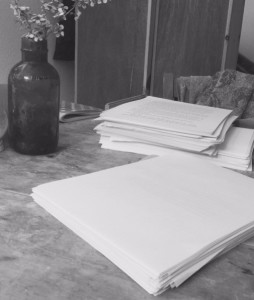Using a Timeline to Get Your Book Done
I see this all the time and it’s based on a fallacy. The fallacy is that each writing day is like another. The truth is, every day is different. Creativity is like that. Sometimes ideas just come, and flow right out onto the page effortlessly. You might end up with five pages. Other days, you can feel at a loss and struggle just to get a few paragraphs down.
This is why I stress over and over in my classes that the most important thing to do first if you want to be a successful writer (and by that I mean a writer who has finished what they set out to write), is just show up. Pick the times, show up in them consistently, and get in the writing flow.
Of course, once you have this habit down, and are consistently writing, it’s natural to start to wonder how to begin putting it all together. This is when you start thinking about how much you need to produce, and how long it will take.
And this is where it can get dicey. Creativity usually resists schedules. The goal as I see it is to allow and encourage creativity and get the ideas on the page. Only after there’s a certain amount of material written (and for most fiction and nonfiction that’s going to be around 100 pages) will it be helpful to start to get clearer on what your goals are, looking ahead. It can be helpful to determine, “Oh, if I can write one scene a week, I will have the first draft done by the end of the year,” or, “writing one chapter every two weeks will allow me to finish in six months.”
The most helpful way to do this I’ve found is to keep track of how much you are doing each day or week; just jot it down in a notebook. Keep it simple. Then after you’ve done this for a month or so, you can take an average and get a realistic assessment. It won’t be accurate in each individual writing session, but over time you will see that you can actually forecast your creative process.




